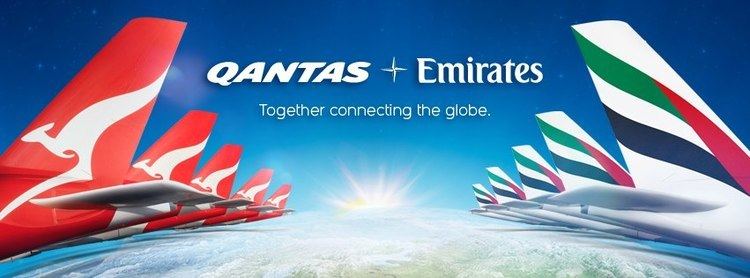 | ||
The longest hop qantas kangaroo route
The Kangaroo Route traditionally refers to air routes flown by Qantas between Australia and the United Kingdom via the Eastern Hemisphere. The term is trademarked by Qantas, although it is used in the media and by airline competitors.
Contents
- The longest hop qantas kangaroo route
- Qantas kangaroo route sydney syd london lhr
- History
- In literature
- References

By 2003 over 20 airlines operated the route. Two airlines offer through flights (i.e. not requiring passengers to change plane en route) on the Kangaroo Route: British Airways and Qantas.

On the 11th of December 2016, Qantas announced non-stop flights from Perth to London commencing March 2018 on the Boeing 787. This will mark the first time the Kangaroo route is a non-stop route and is the first non-stop route between Australia and Europe.
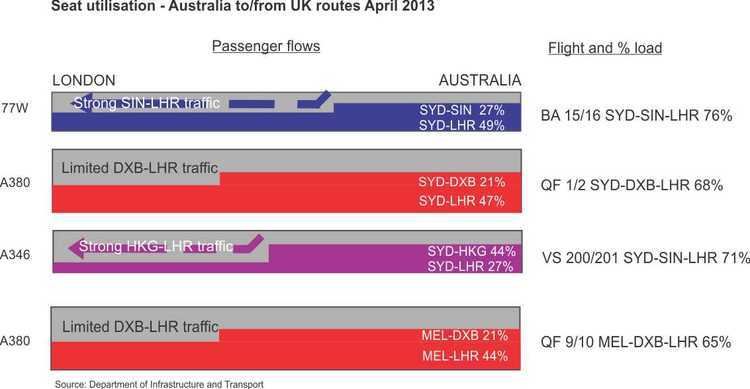
Qantas kangaroo route sydney syd london lhr
History
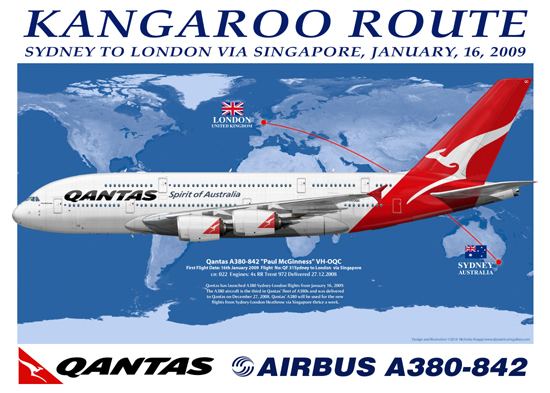
In 1935 Qantas started flying passengers to Singapore in a De Havilland 86 to connect with London-bound Imperial Airways. London to Brisbane service commenced on 13 April 1935. Imperial Airways and Qantas Empire Airways opened the 12,754-mile (20,526 km) London to Brisbane route for passengers for a single fare £195. There were no through bookings on the first service because of heavy sector bookings, but there were two through passengers on the next flight that left London on 20 April. The route opened for passengers from Brisbane to London on 17 April; flights were weekly and the journey time was 12½ days including the rail trip between Paris and Brindisi.
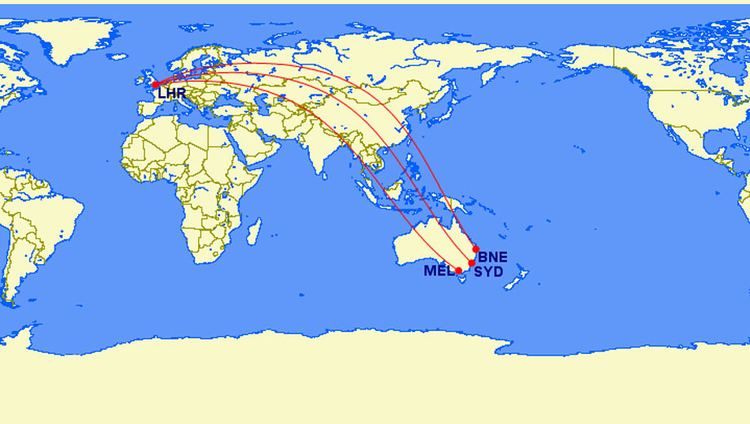
BOAC/Qantas landplane flights from Hurn Airport in southern England to Sydney began in May 1945, initially via Learmonth; after an Avro Lancastrian ditched in the Indian Ocean crossing in 1946, the route shifted back to Singapore. The ABC Guide for September 1947 shows six flights a week from Sydney to England: three Lancastrians that took 77 hr 30 min to Heathrow and three flying boats that took 168 hr 55 min to Poole.
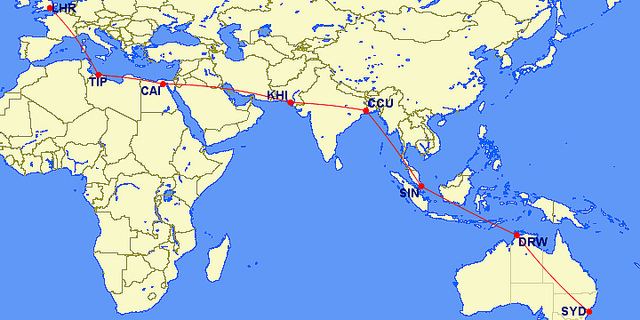
Qantas first flew the Kangaroo Route on 1 December 1947. A Lockheed Constellation carried 29 passengers and 11 crew from Sydney to London with stops in Darwin, Singapore, Calcutta, Karachi, Cairo, and Tripoli (passengers stayed overnight in Singapore and Cairo). A return fare was £585, equivalent to 130 weeks average pay. In the 1950s some Qantas flights made other stops, including Frankfurt, Zürich, Athens, Belgrade, Rome, Beirut, Tehran, Bombay, and Colombo. In May 1958 the Kangaroo Route had 11 westward flights a week: four Qantas Super Constellations, four BOAC Britannias, and one Air India Super Constellation from Sydney to London, one KLM Super Constellation Sydney to Amsterdam, and one TAI DC-6B Auckland to Paris. In February 1959 Qantas' fastest Super Constellation took 63 hr 45 min Sydney to Heathrow and BOAC's Britannia took 49 hr 25 min. Jet flights (Qantas 707) started in 1959; in April 1960 the fastest trip from Sydney to London was 34 hr 30 min with eight stops.
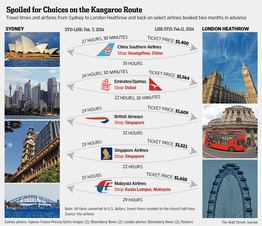
In June 1969 Qantas had 11 Kangaroo Route flights a week from Sydney to London, taking 29–32 hours with 5-6 stops each; BOAC's 9 flights (or possibly 7) had 5-7 stops.
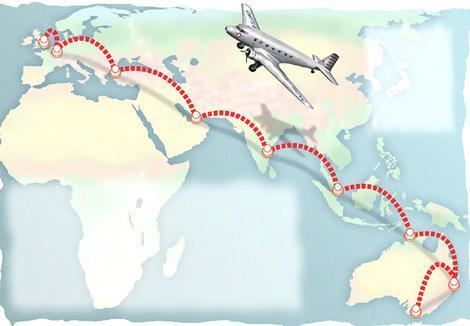
From January 1958 Qantas had a round-the-world network, flying Australia to Europe westward on the Kangaroo Route and eastward on the Southern Cross Route (via Pacific Ocean). In 1964 Qantas started a third route to London via Tahiti, Mexico, and the Caribbean, called the Fiesta Route. Qantas dropped their Southern Cross Route and Fiesta Route in 1974-75.
In 1971 Qantas added Boeing 747s, reducing the travel time and number of stops (in the late 1970s flights typically stopped at Singapore and Bahrain). Fares fell, opening air travel to more people with more competition.
In 1989 Qantas set a world distance record for commercial jets when a Boeing 747–400, City of Canberra (VH-OJA), flew non stop London to Sydney in just over 20 hours.
By 2014 around 20 airlines operated services between the United Kingdom and Australia including Air China, Air India, British Airways, Cathay Pacific, China Airlines, China Eastern Airlines, Emirates, Etihad Airways, EVA Air, Garuda Indonesia, Japan Airlines, Korean Air, Malaysia Airlines, Qantas, Thai Airways, Philippine Airlines, Singapore Airlines and Vietnam Airlines.
Qantas uses Airbus A380 on Europe flights.
In June 2007 Gulf Air ceased operation between Sydney and Bahrain via Singapore.
Until early 2012 Air Mauritius flew Airbus A340s to Sydney and Melbourne via Mauritius.
In September 2012, as part of a new arrangement with Emirates, Qantas announced that - commencing in 2013 - all through services to the United Kingdom would stop at Dubai, and their "Asian services will no longer be a subsidiary of the 'Kangaroo Route'". A hub in the middle of a route is more effective than a hub at either end as connecting traffic more easily fills the plane. Qantas also announced that its service to Frankfurt via Singapore would end in April 2013, leaving London as its only European destination.
On the 11th of December 2016, Qantas announced direct flights from Perth to London commencing March 2018 on the Boeing 787. This will mark the first time the Kangaroo route is a direct route and is the first direct route between Australia and Europe. These flights will operate out of T3 of Perth rather than the traditional T1 in order to facilitate seamless transfers from Qantas domestic flights. This route also opens up the possibility of further direct flights to Europe from Perth such as Paris and Frankfurt.
In literature
The book Beyond the Blue Horizon by travel correspondent Alexander Frater documents the author's attempt to fly all the sectors on the original 1935 Imperial/Qantas London-Brisbane route in 1984.
